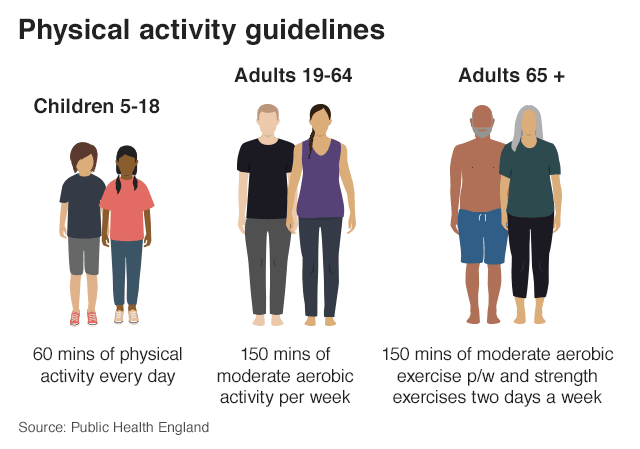

There are 3 elements of the physical activity guidelines:įor sedentary time, the guidelines state that: adults should aim to minimise the amount of time spent being sedentary, and when physically possible should break up long periods of inactivity with at least light physical activity.
#Inactive physical activity definition full
Any activity is better than none, and more is better still.Ĭhristopher Whitty - Chief Medical Officer full interview The guidelines state that for good physical and mental health, adults should aim to be physically active every day. It also draws on new evidence to develop additional guidance on being active during pregnancy and after giving birth, and for disabled adults. The updated UK CMOs’ physical activity guidelines refreshed the 2011 guidelines across all age groups. reducing inequalities for people with long-term conditions.developing and maintaining physical and mental function and independence.reducing the risk of many long-term conditions.Regular physical activity provides a range of physical and mental health, and social benefits, many of which are increasing issues for individuals, communities and society. “If physical activity were a drug, we would refer to it as a miracle cure, due to the great many illnesses it can prevent and help treat.” In the new UK Chief Medical Officers’ ( CMOs) physical activity guidelines launched in September 2019, the CMOs reiterated a clear message about physical activity: It also helps keep symptoms under control, prevent additional conditions from developing, and reduce inequalities. However, evidence shows that regular physical activity can help prevent or manage many common conditions such as type 2 diabetes, cardiovascular disease and some cancers. One in 3 adults in England live with a long-term health condition and they are twice as likely to be amongst the least physically active. It also sets out the ambition of getting everybody active in the 2020s, including those of us who are already living with a health condition. The government’s prevention green paper highlights that becoming more active is good for our mental and physical health, and reduces our risk of developing a number of health conditions. Being physically active and participating in structured exercise can control these conditions, and improve the health of your blood vessels.This edition of Health Matters focuses on the benefit of physical activity for the prevention and management of long-term conditions in adults. Physical inactivity on its own is as much of a risk for heart disease as smoking, high blood pressure and high cholesterol. plaque formation in the blood vessels, which can decrease blood flowĪll of these conditions can lead to heart disease.Why Are Physical Inactivity and a Sedentary Lifestyle Risk Factors? Resistance Training: Moderate intensity, 10-15 reps, 2-3 times per week.


Aerobic Exercise: Moderate to vigorous intensity, 30-60 minutes, 5 times per week.Daily: Sit less and move more during the day.You can reduce your risk of heart disease by carefully planning your exercise routine. For example, walking 3 miles in 51 minutes on a measured route or treadmill, 5 times per week. Exercise is planned, structured, repetitive, and purposeful.For example, walking to the bus stop, gardening, dancing, brisk walking, cycling, etc. Physical activity can be spontaneous or un-planned.There is a difference between physical activity and exercise: You are physically inactive if you do not get at least 30 minutes of moderate intensity exercise on most, if not all, days of the week. Physical Inactivity & Sedentary Lifestyle Currently selected.CABG (Coronary Artery Bypass Graft Surgery).Angioplasty (Percutaneous Coronary Intervention or PCI).


 0 kommentar(er)
0 kommentar(er)
